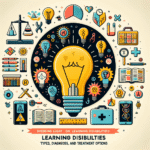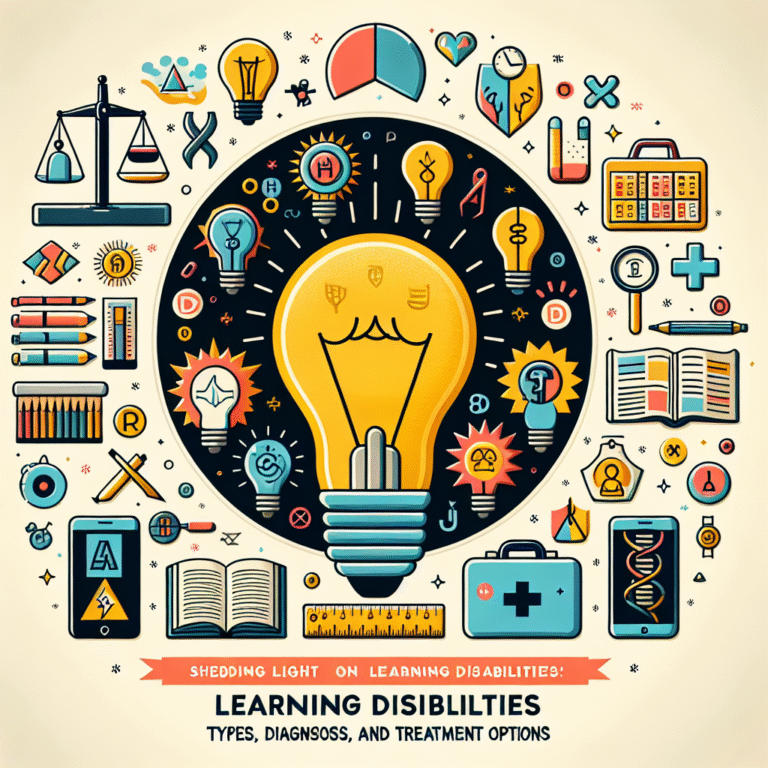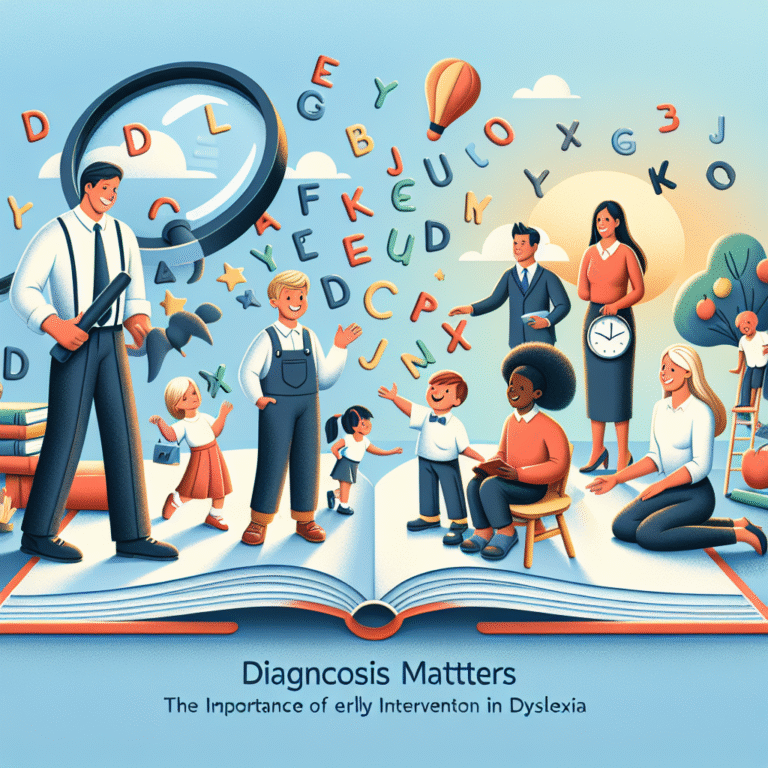
Home-Based Approaches to Assessing Learning Disabilities: A Parent’s Guide to Empowered Learning
Introduction
Every child is unique, equipped with their own set of skills, learning styles, and challenges. For some, understanding the world of academics can feel almost insurmountable, especially when learning disabilities come into play. According to the National Center for Learning Disabilities, approximately one in five children experience learning disabilities, making it crucial for parents to identify these challenges early on. That’s where our focus keyword—Home-Based Approaches to Assessing Learning Disabilities: A Parent’s Guide—comes into play, offering parents direct, actionable knowledge and support.
This guide aims to empower you as a parent, taking a holistic approach to understanding and assessing your child’s learning needs right from the comfort of your home. With practical strategies, actionable insights, and real-world case studies, you will gain the confidence to take charge of your child’s educational journey, ensuring they thrive academically and emotionally.
Understanding Learning Disabilities
What Are Learning Disabilities?
Learning disabilities are neurological disorders that affect a person’s ability to interpret what they see and hear or to link information from different parts of the brain. They are not indicative of a person’s intelligence; many children with learning disabilities are exceptionally bright but struggle with conventional learning methods.
Common Types of Learning Disabilities
- Dyslexia: A reading disorder that affects the ability to recognize and process written language.
- Dyscalculia: Challenges with numbers and mathematical concepts.
- Dysgraphia: Difficulty with writing, affecting handwriting, spelling, and the composition of written text.
- Auditory Processing Disorder: Challenges in processing auditory information, which can impair listening and communication.
Identifying Signs of Learning Disabilities
Parents may notice signs indicative of learning disabilities. Below is a list of common symptoms:
- Difficulty following directions
- Trouble with spelling or writing
- Struggles with math concepts
- Difficulty staying focused or paying attention
- Challenges in remembering specific information
Recognizing these signs early can lead to timely interventions, and this is where Home-Based Approaches to Assessing Learning Disabilities: A Parent’s Guide becomes essential.
Home-Based Assessment Strategies
Creating a Conducive Learning Environment
Before diving into assessments, ensure that your home environment is conducive to learning. This includes:
- Minimizing Distractions: Create a designated study area free from noise and interruptions.
- Organizing Materials: Keep learning materials organized and readily accessible, so your child knows where to find them.
Step-by-Step Assessment at Home
1. Initial Observations
Start with simple observations. Document your child’s responses during typical learning activities. Create a behavior journal to track specific instances of struggle.
2. Use Standardized Tools
Many standardized tools are available for home use. Some notable ones are:
| Tool | Description |
|---|---|
| SWOT Analysis | Strengths, Weaknesses, Opportunities, Threats assessment to gauge the child’s abilities. |
| Dyslexia Screening Tests | Various online tools that provide a screening matrix for dyslexia. |
| Learning Style Inventories | Assess how your child learns best—visually, audibly, or kinesthetically. |
3. Practical Activities
Engage in activities that can help identify specific learning challenges:
- Reading Together: Notice if your child has difficulties decoding words or lacks comprehension.
- Math Games: Use manipulatives like blocks or counters to evaluate their understanding of numbers.
- Writing Exercises: Have your child keep a journal to monitor fine motor skills and spelling patterns.
Case Study: Sarah’s Mathematical Journey
Sarah was a bright, outgoing 10-year-old who loved storytelling but struggled with math concepts. Using home-based assessment strategies, her parents kept a Math Journal, documenting her performance during math games. After a few weeks, they noticed patterns in her mistakes, particularly with multi-digit operations.
With this information, they could seek the right educational resources and harness specific learning tools tailored around her struggles with dyscalculia.
Analyzing Results
Once you have gathered sufficient data, analyze your findings. Look for recurring themes and specific weaknesses. This analysis will not be diagnostically conclusive but will provide a clearer picture of where your child’s challenges might lie.
Seeking Professional Guidance
While parents can gather significant information through home-based assessment, professional evaluations may be necessary for a comprehensive understanding. A psychologist or educational specialist can offer formal assessments that can lead to tailored interventions and support.
Empowering Your Child Through Support
Communication is Key
Discuss the findings openly with your child, explaining both strengths and areas where help will be beneficial. Open communication fosters a supportive relationship that encourages growth.
Implementing Learning Strategies
Based on your assessments, you can utilize various home-based techniques such as:
Multi-sensory Learning: Combine visual, auditory, and kinesthetic learning methods to cater to different learning styles.
Structured Routines: Consistent schedules can help your child to better anticipate and manage their learning tasks.
- Positive Reinforcement: Celebrate small victories to build confidence and motivate your child to engage with challenging materials.
Case Study: John’s Reading Breakthrough
John, a 9-year-old with dyslexia, found reading an immense challenge. After noticing his struggles, his parents implemented home strategies, including reading aloud while he followed along with the text. This multi-sensory approach bridged gaps in his phonemic awareness. Over time, his reading fluency improved significantly, illustrating the power of home-based assessments leading to effective interventions.
Conclusion
Navigating the complexities of learning disabilities can be daunting for any parent, but Home-Based Approaches to Assessing Learning Disabilities: A Parent’s Guide provides the tools necessary to better understand and support your child. This guide offers insights into creating a conducive home environment, assessing learning challenges effectively, and fostering a nurturing educational experience.
Remember, every step you take towards understanding your child’s learning needs can create opportunities for success. By harnessing these strategies, you empower yourself and your child on the journey to holistic learning and growth.
FAQs
1. What are the first steps I should take if I suspect my child has a learning disability?
Start by observing their behaviors and documenting these observations. Utilize some of the home assessment strategies mentioned in this guide. If concerns persist, seek input from teachers or educational specialists.
2. Can learning disabilities be diagnosed at home?
While home assessments can provide valuable insights, a formal diagnosis should be performed by a qualified professional, such as a psychologist or an educational specialist.
3. How can I support my child emotionally if they have a learning disability?
It’s crucial to maintain open communication about their challenges. Regularly affirm their strengths and offer them strategies to cope with frustration or challenges they face.
4. What resources are available to help my child?
Look into online learning platforms, local tutoring centers specializing in learning disabilities, and educational apps that cater to specific learning challenges.
5. Are learning disabilities hereditary?
Research indicates that learning disabilities can run in families, and it’s important to be aware of any family history as this might help in early identification and intervention.
By following this guide and implementing the strategies provided, you are well on your way to fostering your child’s strengths while understanding and addressing their self-identified learning challenges effectively.









